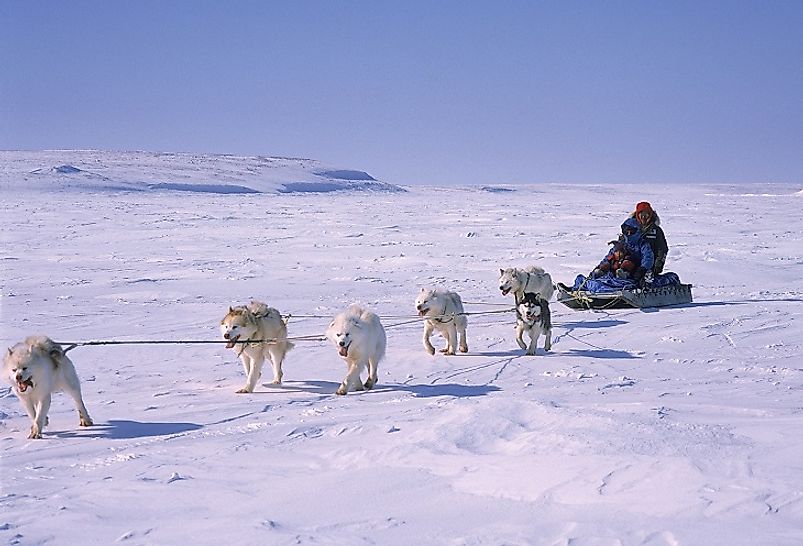What Is The Climate And Landscape Of Nunavut Like?

5. Description
Nunavut is the newest territory of Canada, receiving its current status of recognition as a Canadian territory separate from the Northwest Territories in 1999. It is a well-known natural paradise, with a stunning landscape and vast stretches of absolute wilderness. It is a famous tourism destination to those people who love adventurous activities like canoeing, fishing, hiking, kayaking, and much more. The territory has a very low population density, with approximately 33,000 people in an area of 2,093,190 square kilometers. Nunavut has three distinct regions, namely Qikiqtaaluk, Kivalliq, and Kitikmeot. The winters are usually cold and windy, with the temperatures dropping as far as -40 degrees Celsius. Thermometers in Nunavut are seen rising up to as high as 30 degrees Celsius in the summertime.
4. Historical Role
The human history of the Nunavut region dates back to 4,000 years ago, when a prehistoric tribe named the Tuniit arrived in Nunavut, and quickly became the dominant inhabitants of the entire region with their expertise in using bows and arrows. Their weapons and tools used for building their tents were very similar to those of the Northern Siberian peoples. Around 1,000 years ago, Inuit people with advanced knowledge of maritime hunting skills spread rapidly into Nunavut, and displaced the Tuniits in the process. These people quickly adapted to the harsh and isolated life of the arctic environment, which speaks a lot about their sheer determination and physical strength. Their culture has remained integral in the region into the 21st Century.
3. Modern Significance
Vast reserves of gold, uranium, diamond, copper, silver, zinc, and iron ores have been discovered in Nunavut over the more recent years. This has made the entire territory of Nunavut extremely economically attractive, despite hurdles in transportation and mining. This wealth of natural resources has offered Nunavut a much-needed significance in the modern times. Moreover, its excellent location near the North Pole has offered an excellent base for Arctic scientific exploration. With snow melting rapidly due to global warming, there is also an increased possibility for ship vessels having increased ease of access to a true "northwest passage" (i.e. an Arctic sea route to the Pacific Ocean).
2. Habitat and Biodiversity
Inuits have been the primary human inhabitants of Nunavut throughout the past several centuries. In spite of an arrival of Europeans and Americans, a majority of the population is still constituted these native peoples. Nunavut has a low biodiversity owing to the extremely cold climes. However, one can spot Tundra wolves, Ringed seals, Bearded seals, walruses, Killer whales, Beluga whales, and Polar bears living here. The place also has a diversity inclusive of more than 180 marine fishes, such as the Northern Wolfish, Greenland Halibuts, Four-horn Sculpins, Capalins, and Arctic stakes.
1. Environmental Threats and Territorial Disputes
Nunavut is currently experiencing a huge environmental threat due to rising global temperatures. This warming effect is disrupting the ages-old lifestyles of the native peoples. Furthermore, the decreasing sizes of the region's ice sheets are allowing vessels to explore the Northwest Passage, which means increased dangers of oil spills into the Arctic waters, with the potential of destroying marine fishes and wildlife throughout the region. Other activities, like mining, are also posing an increasing environmental threat. However, the Inuits' territorial disputes have largely been resolved, with Nunavut becoming a Canadian territory in 1999 after a longstanding demand among its inhabitants for their separation from the Northwest Territories.







